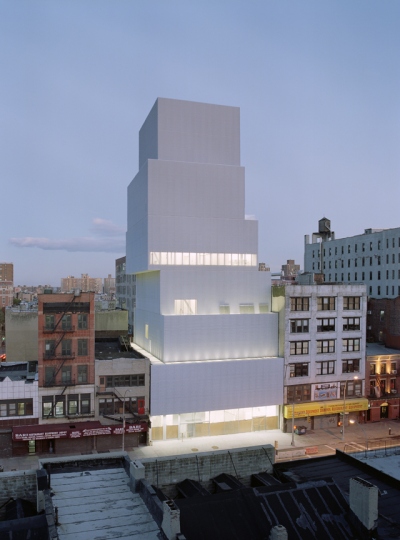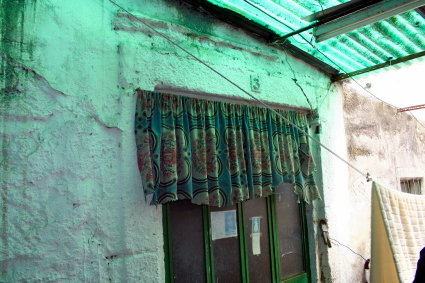 |
| New Museum of Contemporary Art, Sejima+Nishizawa/SANAA Photo: Dean Kaufman |
by ANTÓNIO CERVEIRA PINTO
NEW MUSEUM / NEW COMMISSIONS
Jeremy Deller: It Is What It Is: Conversations About Iraq
As part of the Three Museum Project, the New Museum and Creative Time present It Is What It Is: Conversations About Iraq, a new commission by British artist Jeremy Deller. In an effort to encourage the public to discuss the present circumstances in Iraq, a revolving cast of participants including veterans, journalists, scholars, and Iraqi nationals who have expertise in a particular aspect of the region and/or first-hand experience of Iraq have been invited to take up residence in the New Museum’s gallery space with the express purpose of encouraging discussion with visitors to the Museum. The exhibition will be at the New Museum from February 11 through March 22, 2009. This project will extend past the New Museum’s walls into towns and cities across the United States during a three-week road trip and will then travel to the Hammer Museum in Los Angeles, and the Museum of Contemporary Art in Chicago, as part of the Three Museum partnership. [more | exhibition website | Artist Talk at the Royal Society of Arts 2,008 (MP3 )]
Please compare Sejima architecture with Jeremy Deller’s conversation
piece on Iraq at New Museum, in downtown Manhattan, NY. USA. The SANAA
building is a typical example of late liberal architectural icones.
Turner Prize Jeremy Deller’s art inside, on the other hand, points
towards a new kind of cultural experiment. But will the
modern/contemporary art museum —as the non-believer church of Capitalism
and Urban Democracy—, still be the best possible environment for a
social responsive art?
February 25, 2009
